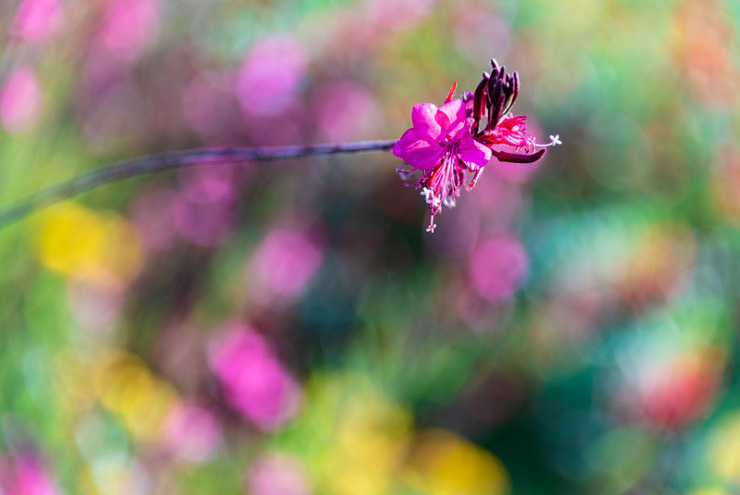Poet-a-Day: Meet Jim Kacian
Haiku writer Jim Kacian is one of a handful of outstanding poets introduced to me by longtime friend and haiku extraordinaire Christopher Patchel. I’m delighted to feature three of Kacian’s haiku in How to Write a Form Poem.
I won’t give any of those away (you gotta get the book!) but here’s one of Kacian’s best-known haiku to introduce you:
swallowflight . . .
looking out the window
long after
— Jim Kacian
As founder and director of The Haiku Foundation, Kacian has a wealth of wisdom to share about the art of haiku. Here’s what he has to say about his experiences with this rewarding practice.
Tania Runyan (TR): Tell me about your journey into haiku. What got you started? What poets, interests, or life experiences brought you to this form?
Jim Kacian (JK): Haiku hit me at exactly the right time in my life. I had just changed many of my life circumstances—I had left a relationship, a job, and a locale—and I had some free time for the first time in several years. As a consequence I was free to re-read Jack Kerouac’s novel The Dharma Bums, wherein he and his friends Gary Snyder and Allen Ginsberg, among others, discover haiku through the books of R. H. Blyth.
Kerouac was an autobiographical writer, and his details are most often true, so I looked up the Blyth books, and found they really existed. I ordered them from The Reader’s Catalog (these were the days before Internet) and they turned out to be exactly what I needed at the time. Haiku focused my interests in the natural world, my inclination towards poetry writing, and my personal circumstances. That was more than 35 years ago, and it still holds my interest today.
TR: Do you write in free verse or other forms besides haiku? How do you choose when to do what? In other words, when haiku … and why?
JK: I have written and published in a great number of genres, and continue to do so. However, once I began to write haiku with competence (which took some years), it became by far my primary mode of expression. Haiku (or its related genres—haibun, haiku sequence, haiga) suits my needs for most of what I am compelled to say, and has the further advantages of keeping me pithy, forcing me to find the most streamlined and crystallized expression for my subject matter, and keeping the embellishments of “story” and personal bias to a minimum.
It also nests comfortably within a thousand-year-old continuum of practice, and so is in conversation with the expression of poets of many generations, while still offering a portal of communication to my contemporaries.
TR: What are some common misconceptions about haiku, and how do you hope a book like How to Write a Form Poem can help?
JK: I am reluctant to pronounce too stridently on what haiku “ought to be”. To my mind, there are levels of competence to haiku, and the genre is capacious enough to house them all.
A common conception of haiku is “anything I can fit into 17 syllables”, and while this is certainly rudimentary, I believe even this approach can lead an interested person to its entire range of possibility. People who have studied the genre have, over time, come to recognize that some of the basic information within the popular conception of haiku doesn’t bear up under scrutiny: the equivalence, for example, of the basic sound units of the Japanese language (called on) with syllables in Western languages. Western syllables convey much more information, and a 17-syllable poem in English, say, is typically far more detailed than a 17-on poem in Japanese; hence, the basic premise that Western haiku are composed of 17 syllables makes it a very different sort of poem than that which the Japanese have developed over the past millennium.
And making this the primary tenet of what constitutes such a poem also misses the true genius of what makes haiku different from every other poetic genre: the kire (caesura, or cut). The best (that is, most poetic, with all the different valences that may contain) haiku are not pieces of prose fitted to a fixed syllable count, but rather elements of poetic relationship, counterposing images separated by a gap (kire). It is the charge of awareness across that gap that constitutes the singular function of haiku.
And likewise, we have largely misunderstood the shape of such poems because of the manner in which we have rearranged them: Japanese haiku consist of a single vertical line, which can be broken (by the kire) into two parts, which we can think of as short—long or else long—short, but in nearly all examples, asymmetrical. We have interpreted this in the West in three lines, with a 5-7-5-syllable array, which has certain qualities of its own, but which doesn’t necessarily approximate the short-long or long-short of Japanese practice.
There are many nuances as well, but these are the most overt matters which the transference of the genre from its country of origin to Western cultures has muddled. Let me add that haiku has grown from its international exposure, and few if any advocate a return to the standards that prevailed 3-4 centuries ago, in the days of its early masters Basho and Buson.
Haiku today is a vibrant, global poetic resource, and every culture brings unique and vibrant elements to its growth. But this growth is primarily the result of serious poets working with a knowledge of the history of the genre, rather than its appearance as a one-size-fits-all popular meme. But we all start somewhere, and if popular exposure encourages even a few to look more deeply into haiku’s resources, then it will not have been without positive results.
About Jim Kacian
Jim Kacian is founder and director of The Haiku Foundation, the premier resource for international haiku in the world; founder and owner of Red Moon Press, the largest and most prestigious dedicated publishing house in the genre; editor-in-chief of Haiku in English: The First Hundred Years (W. W. Norton, 2013), a definitive volume on the subject; and the author of more than a score of books of poetry, primarily haiku. He lives in the Shenandoah Valley of Virginia with his longtime life partner Maureen Gorman.
Photo by Nenad Stojkovic, Creative Commons, via Flickr. Post by Tania Runyan.
Browse more Poet-a-Day
Browse 50 States of Generosity
Check out The Yellow Wall-paper Graphic Novel
______________
How to Write a Form Poem: A Guided Tour of 10 Fabulous Forms

You’ll also be entertained by Runyan’s own travel stories that she uses to explain and explore the various forms—the effect of which is to bring form poetry down to earth (and onto your own poetry writing map)!
BUY HOW TO WRITE A FORM POEM NOW!
- Flowers of California: California Poppy - December 8, 2022
- Flowers of California: Lily of the Nile - October 13, 2022
- Flowers of California: Crape Myrtle - October 5, 2022


Leave a Reply